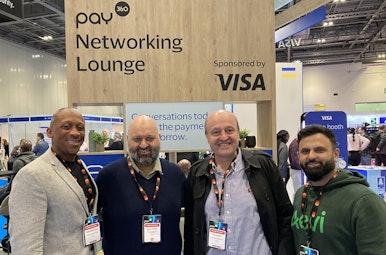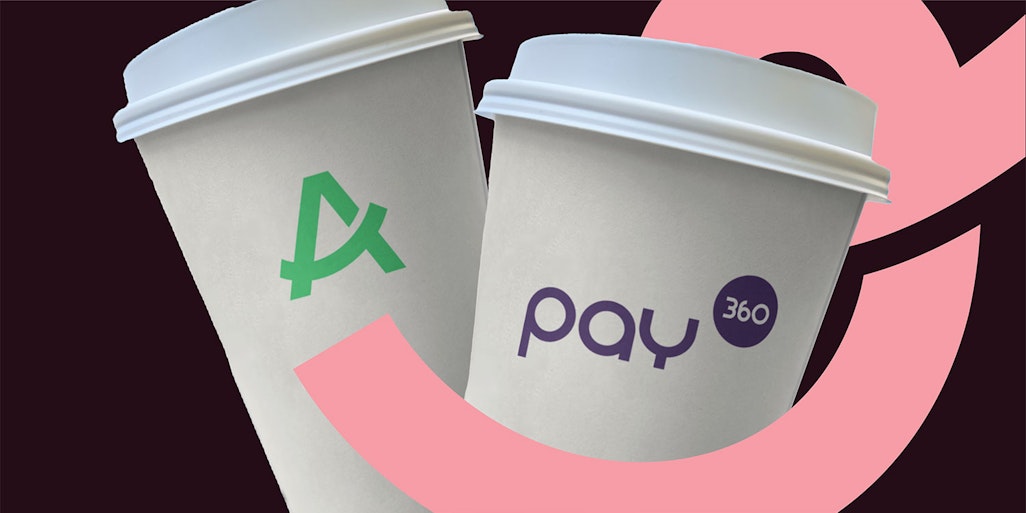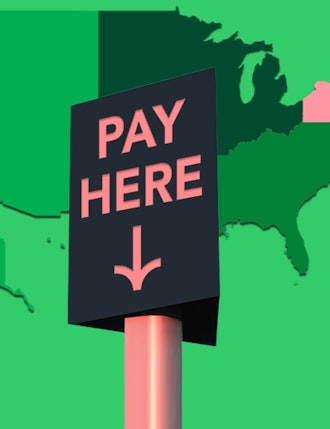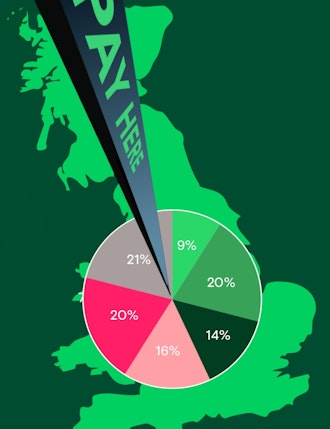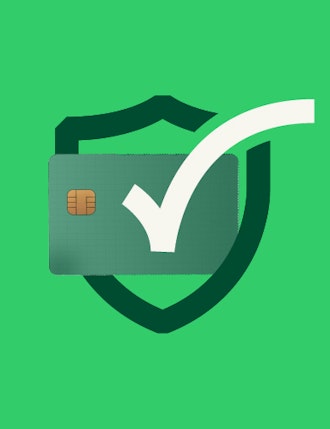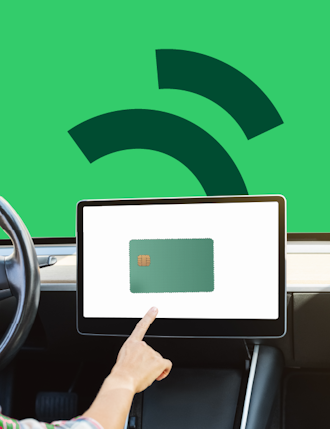Key Insights
-
Payments are becoming more complex, and businesses need orchestration to unify diverse payment methods.
-
Regulatory changes around BNPL, AI fraud prevention, and data access require businesses to stay agile.
-
Consumer trust relies on streamlined, localized payment experiences that cater to regional preferences.
-
Checkout is no longer the focal point, as orchestration now drives the future of seamless payments.
Don't have time to read more now? Sign up to our newsletter to get the latest insights directly in your inbox.
The payments world is moving fast, and this year’s Pay360 event made one thing clear: businesses that nail payment orchestration will be in the captain’s seat, while the rest risk sinking. From stablecoins and CBDCs to AI-driven fraud prevention and the future of checkout, one big theme emerged... payments are getting more complex, and orchestration is the rudder that keeps you on course.
Payments are becoming more complex, orchestration is the answer
The world of payments is no longer a one-size-fits-all model. Cross-border transactions are evolving, with stablecoins and central bank digital currencies (CBDCs) emerging as potential game-changers for settlement.

"If done right, CBDCs could change the whole way payments work."
Oscar Hornstein, UKTN
Meanwhile, the UK government is increasing its interest in open banking, signaling a shift toward interconnected financial ecosystems that demand seamless payment experiences. The government's National Payments Vision recognizes the vital role of open banking in facilitating account-to-account payments and outlines a strategic blueprint for the future of the UK's payments landscape. These initiatives reflect a concerted effort to develop open banking into a commercially sustainable model that enhances consumer and merchant choice.
At the same time, local payment methods are gaining traction. From QR code payments dominating APAC to Norway’s Vipps leading the charge in the Nordics, it’s clear that payments are inherently local. Merchants need a strategy that enables all these different payment types, something that only a robust orchestration solution can provide.
Integration is key
The financial world has never been more fragmented. Businesses are juggling everything from traditional banks and fintech disruptors to blockchain assets, CBDCs, and a mix of local and global payment methods. It’s a tangled web, and navigating it isn’t getting any easier.
The key to making it all work? Interoperability. That’s where payment orchestration comes in, it’s the glue that connects different payment systems, keeping transactions flowing smoothly no matter the infrastructure.
Whether it’s bridging the gap between legacy banking rails and digital wallets or making local payment methods fit into a global strategy, businesses don’t just need more payment options, they need them to work together flawlessly.
Regulatory and policy shifts mean agility is essential
With evolving regulations around buy now, pay later (BNPL), AI-driven fraud prevention, and data access, businesses must be ready to pivot at a moment’s notice.
- BNPL remains a ‘wild west’: Governing bodies are moving toward regulation, meaning merchants need adaptive payment solutions.
- AI and fraud prevention: Caution is growing around how AI is applied to payments, especially with differing approaches between the UK and EU. The UK is keeping things flexible with a pro-innovation approach to AI in fraud prevention, while the EU is laying down stricter rules with its AI Act. Businesses need to stay sharp, balancing compliance with the freedom to innovate.
- Data use & access: With ongoing legislative developments, businesses must ensure they have the flexibility to comply while still maximizing data-driven insights.
As consumer expectations continue to evolve, businesses must rethink the role of checkout in the payment journey. The focus is shifting from a single transaction point to a fully integrated, frictionless experience across multiple touchpoints. Whether it’s a social media purchase, a subscription-based model, or an in-store transaction, customers expect payments to be effortless, intuitive, and instant.
Payment orchestration ensures that merchants can meet these demands by providing a unified, flexible system that adapts to new technologies and buying behaviors, keeping them ahead of the curve in an increasingly digital-first world.
Merchants must focus on the long game
Trust is the currency of payments, yet many businesses still prioritize short-term incentives over long-term stability.
Consumer trust is everything, and in the Nordics, consistency is key to building confidence in payments. According to the Nexi Group-Nets Nordic Payment Report, seamless and reliable payment experiences are crucial for maintaining trust in an increasingly digital landscape. Orchestration plays a vital role in ensuring every transaction, whether online or in-store, works flawlessly, reinforcing consumer confidence across all payment methods.
"Why partner with someone who messes up a payment experience at the last second?"
David Sandstrom, CMO, Klarna
Sustainability isn’t just a buzzword, it’s about future-proofing your payment systems. Instead of chasing quick wins, businesses need to build payment ecosystems that are scalable, adaptable, and designed to grow with the market. Payment orchestration ensures you’re not just adding more payment options but creating frictionless, long-term solutions that stand the test of time.
Payments aren’t one-size-fits-all. Local preferences play a huge role in how customers want to pay. Merchants need more than just a range of options, they need to integrate those methods in a way that feels natural and seamless to the customer, wherever they are. It’s all about meeting customers where they are and making payments feel effortless.
The future of checkout: why it’s all about orchestration
Once upon a time, checkout was the star of the show, the moment that made or broke the shopping experience. But at Pay360, it became clear that checkout is now just another part of the process. The real magic? It’s happening behind the scenes, where payment orchestration is pulling all the strings. With platforms like TikTok Shops and buyable ads revolutionizing how consumers shop, payments are no longer a simple step at the end, they’re woven throughout the whole journey.
Orchestration is what makes all this possible. It’s not enough to just offer a bunch of payment options; you need a smart system that brings them all together, whether your customers are shopping online or in-store. From digital wallets to credit cards to local payment methods, orchestration ensures everything clicks into place, providing a smooth experience every time.
For merchants, it’s all about staying ahead of the game. Consumer behavior is shifting fast, and businesses need solutions that can keep up. Payment orchestration lets you adapt to whatever comes next, whether it’s social commerce, new payment trends, or evolving customer expectations. The key is staying informed and ready for change. By embracing orchestration, merchants can future-proof their payments, ensuring they’re always prepared for what’s around the corner.
Payments need to work for everyone
Inclusivity in payments took center stage at Pay360, with a strong focus on solutions that serve all consumers, regardless of their abilities or circumstances. Joanne Dwar from Project Nemo highlighted the "Purple Pound," referring to the collective spending power of disabled consumers. This often-overlooked group was recognized as a key factor in building trust and fostering long-term customer relationships.

For businesses, this means ensuring that payment experiences are accessible, reliable, and easy to use for everyone. From implementing screen reader-friendly interfaces to supporting multiple authentication methods, inclusivity isn’t just a regulatory requirement, it’s a competitive advantage. When payments are designed to work cohesively for all, businesses can unlock new customer segments, drive loyalty, and reinforce their brand’s commitment to accessibility.
Payment orchestration plays a key role in delivering these inclusive experiences. By enabling a variety of payment methods, currencies, and accessibility-focused features within a single streamlined framework, businesses can ensure that no customer is left behind. Whether it’s a disabled shopper using a voice-controlled checkout or an elderly customer preferring a familiar local payment method, orchestration ensures that payments are frictionless and universally accessible.
Enabling the future of payments with Aevi
Pay360 reinforced what we already knew: The payments industry is becoming more complex, and businesses need a way to manage this complexity without adding friction. That’s where Aevi’s payment orchestration platform comes in.
By enabling businesses to offer any payment method, anywhere, through a single, seamless platform, Aevi empowers merchants, acquirers, and financial institutions to stay ahead of evolving trends. The future of payments isn’t about just adding more payment options, it’s about orchestrating them intelligently.
Want to learn more about how Aevi can future-proof your payments strategy? Let’s talk.
